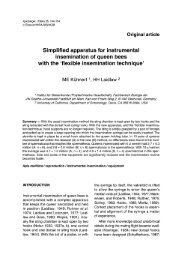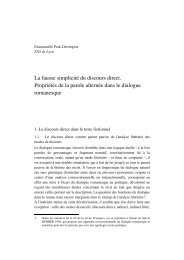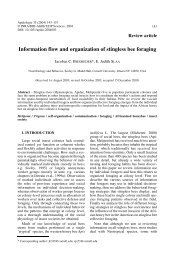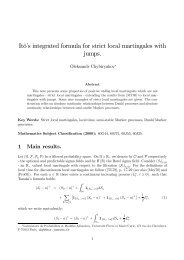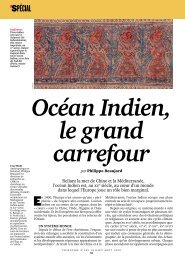ARBEITSGEMEINSCHAFT DER INSTITUTE FÜR ... - HAL - INRIA
ARBEITSGEMEINSCHAFT DER INSTITUTE FÜR ... - HAL - INRIA
ARBEITSGEMEINSCHAFT DER INSTITUTE FÜR ... - HAL - INRIA
You also want an ePaper? Increase the reach of your titles
YUMPU automatically turns print PDFs into web optimized ePapers that Google loves.
V. Development<br />
22. H. KAATZ: Regulation of yolk protein synthesis in honey bee queens (!).<br />
23. K.H. HARTFEL<strong>DER</strong> : Caste differentiation in meliponine bees : Comparative analyses of larval<br />
food under the aspect of balanced nutrition (’:’).<br />
24. W. VON <strong>DER</strong> OHE: Build-up of honey bee colonies in springtime delayed by cold snaps (&dquo;&dquo;).<br />
VI. Pathology<br />
25. D. MAUTZ , HIRSC HMANN and KEKINII ZER: Light-microscopic studies on th: embryonic development<br />
of Varroa jacobsoni.<br />
26. A. WIENANDS : The blood cells of Apis mellifera L. and their alteration during Varroa infestation.<br />
27. P. SCHNEI<strong>DER</strong> The influence of the Varroa infestation during pupal development on the<br />
flight activity of worker honey bees (·‘).<br />
28. S. Fucas : Conditions when reproduction of Varroa in worker cells is advantageous. The<br />
relationship between mite reproduction, mite population size, numbers of worker cells and<br />
numbers of drone cells (&dquo;‘).<br />
29. K. MOLLER : Change over of Vnrroa jacobsoni from adult honey bees to larvae in dependance<br />
of the larval age.<br />
30. L.S. GONCALVES : The Varroa Research Program in the Honey Bee Laboratory of the University<br />
of Sao Paulo in Ribeirao Preto (&dquo;&dquo;&dquo;).<br />
31. W. KOCH: Plans for studies of secondary bacterial infection in Varron-infested honey bee<br />
colonies.<br />
32. F. SAKOFSKI : Observations on the transmission of Var /’O<br />
jacobso ll i from one honey bee<br />
colony to another.<br />
33. S. PA TZOLD : Studies on the behaviour of Varroa jncobsoni in a temperature gradient.<br />
34. H. HO PPE and W. Rt TER : The possibilities and limits of thermal treatment as a biotechnical<br />
method of fighting Varroatosis (&dquo;’).<br />
35. G. STAEMMLER : The method of « ban comb » under the climatic conditions of Schleswig-<br />
Holstein.<br />
36. A. K!EPSCtt : Current status of research on the « ban comb » method.<br />
37. R. MOOSBECKHOFER and I. <strong>DER</strong>AKHSHIFAR : Comparison of effectiveness of Perizin, Folbex VA<br />
and Formic acid treatments for controlling Varroa jacobsoiii in honey bee colony nuclei (-&dquo;:).<br />
38. K.-H. KIMMICH : Further studies on the effect of formic acid on sealed honey bee brood.<br />
39. U. EYRICH and W. RITTER : The distribution of a systemic acaricide in the body of the honey<br />
bee (v ‘).<br />
40. N. KOENIGER : Dispersal of acaricides in honey bee colonies by means of natural contact<br />
among the bees (‘&dquo;).<br />
41. W. RITTER and U. SCHNEI<strong>DER</strong> -R ITT ER: Varroa jacobsolli and Tropilnelrrps clarae in colonies<br />
of Apis mellifera in Thailand (v).




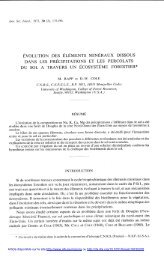
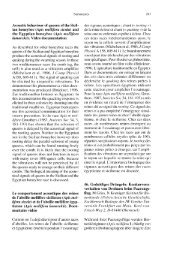
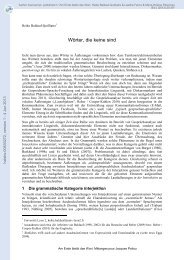
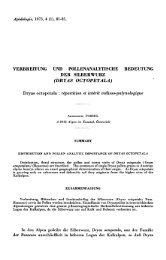
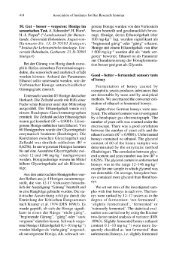
![4 C]-Polyethylenglykol bestimmt, der - HAL - INRIA](https://img.yumpu.com/22454280/1/177x260/4-c-polyethylenglykol-bestimmt-der-hal-inria.jpg?quality=85)
